Jesus Arrue has Valencia in his DNA. From the wrong side of the tracks, he overcame poverty, thanks to his wonderful family, and now includes Madonna among his stellar roster of clients. Eugene Costello met him at his studio in El Carmen…
Jesus Arrue is a true son of Valencia, an artist from a very humble background who has achieved international success, and now numbers Madonna among his clients. I visited him at his studio in El Carmen; he could not be more welcoming.
His story is one from the wrong side of the tracks, an inspirational one. We have allocated 20 minutes for the interview, and already his PR adviser is twitching; we end up taking an hour and a half.
He couldn’t be more open. “When I was a child, we lived in a very poor neighbourhood, the old Barrio Chino near Mercat Central, which was in those days full of prostitutes, drugs and despair – I loved it,” he says. “I grew up in that environment. We lived on the fourth floor of an apartment block, a finca, which my parents still live in to this day.”
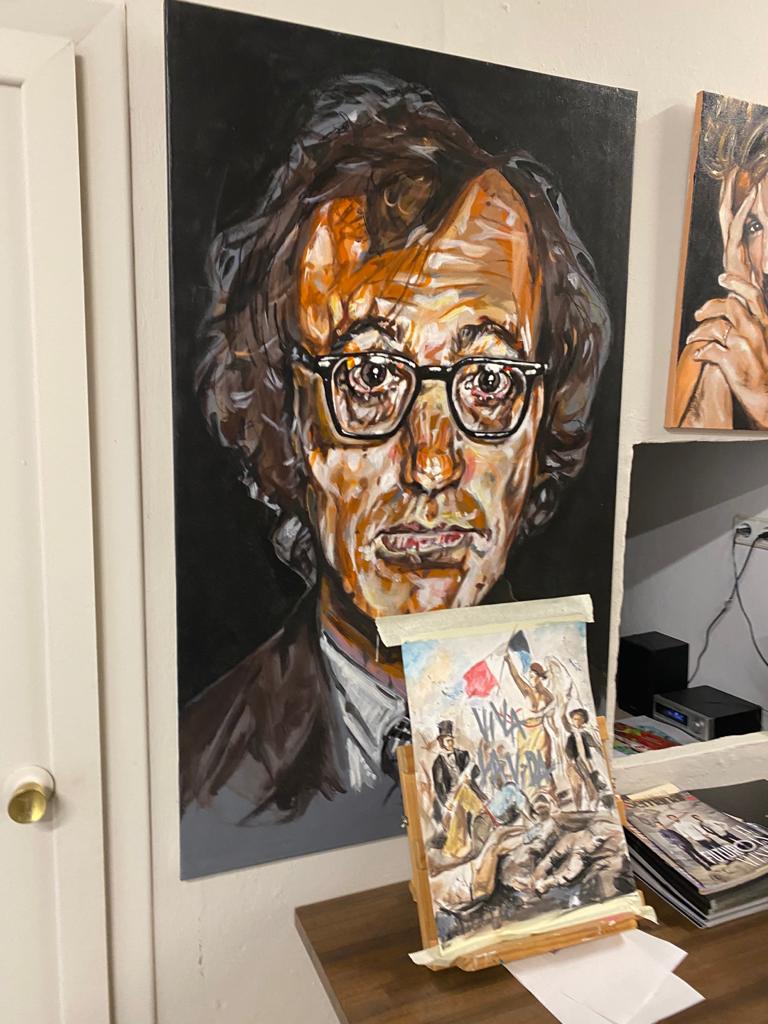
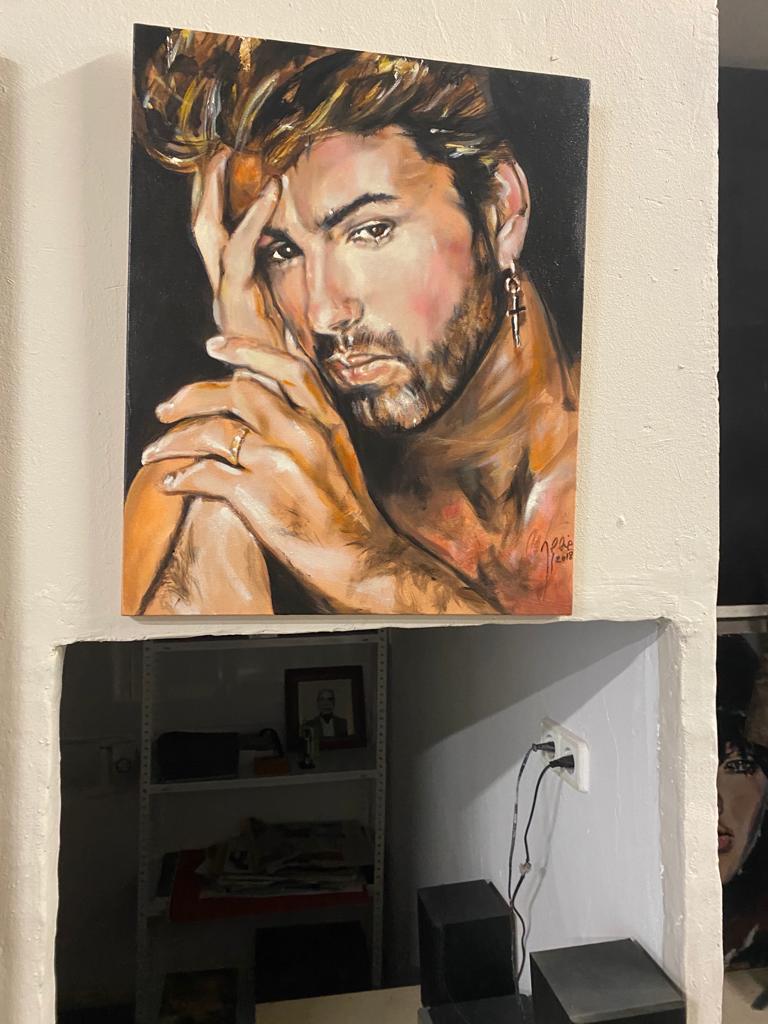
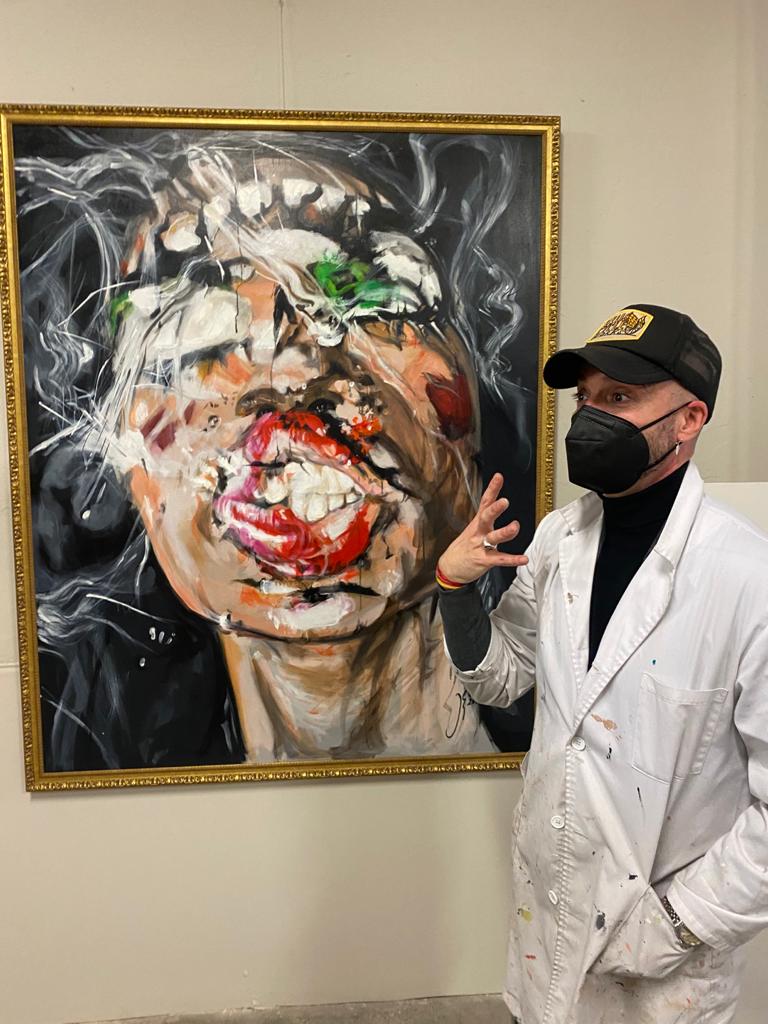
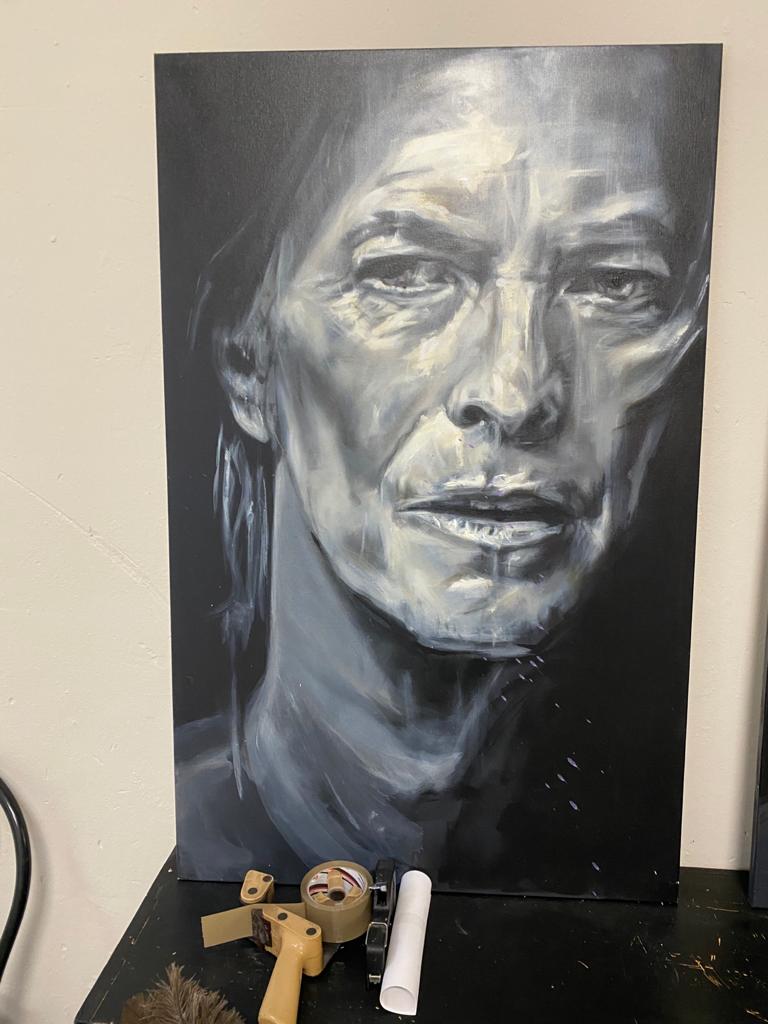
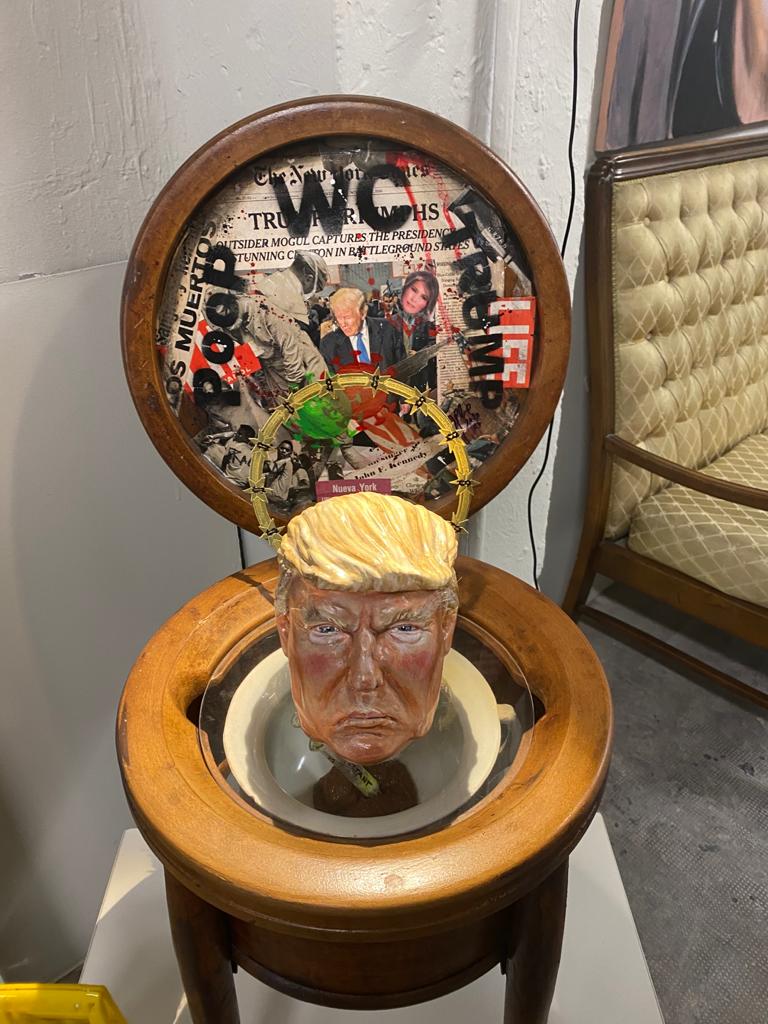
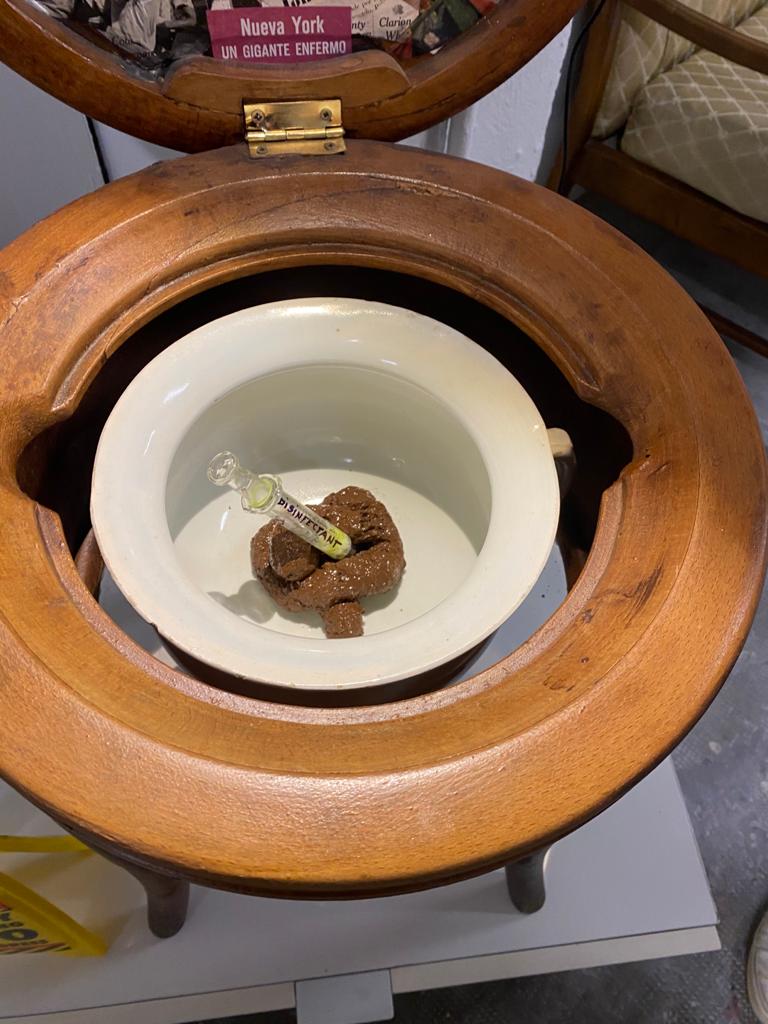
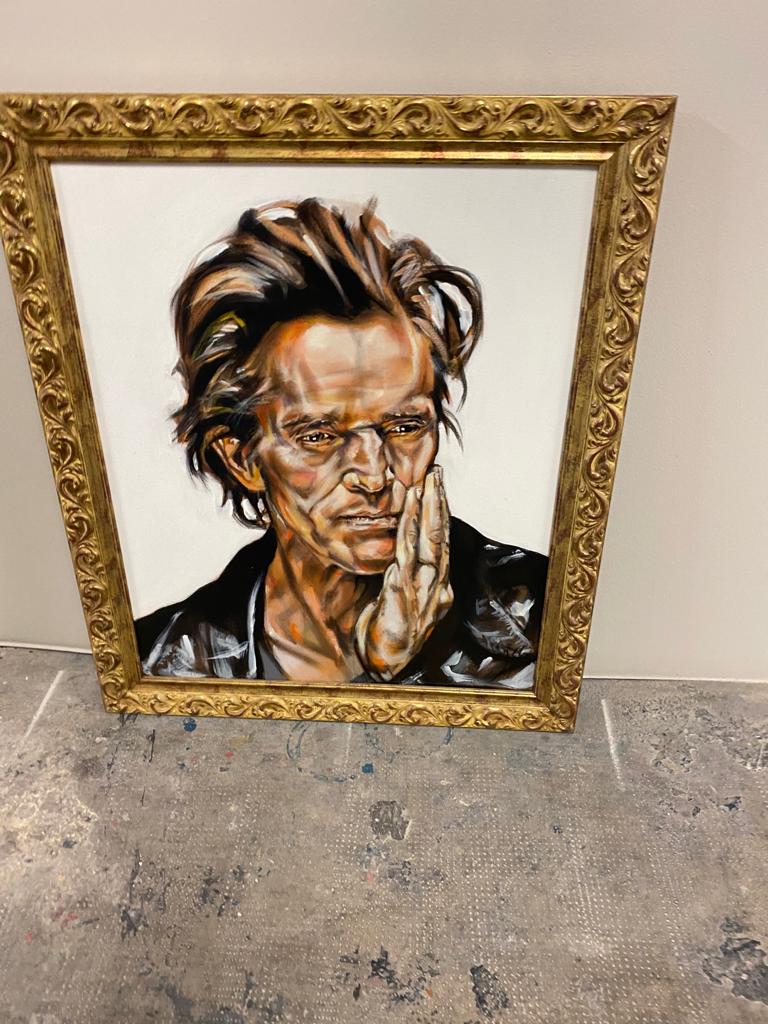
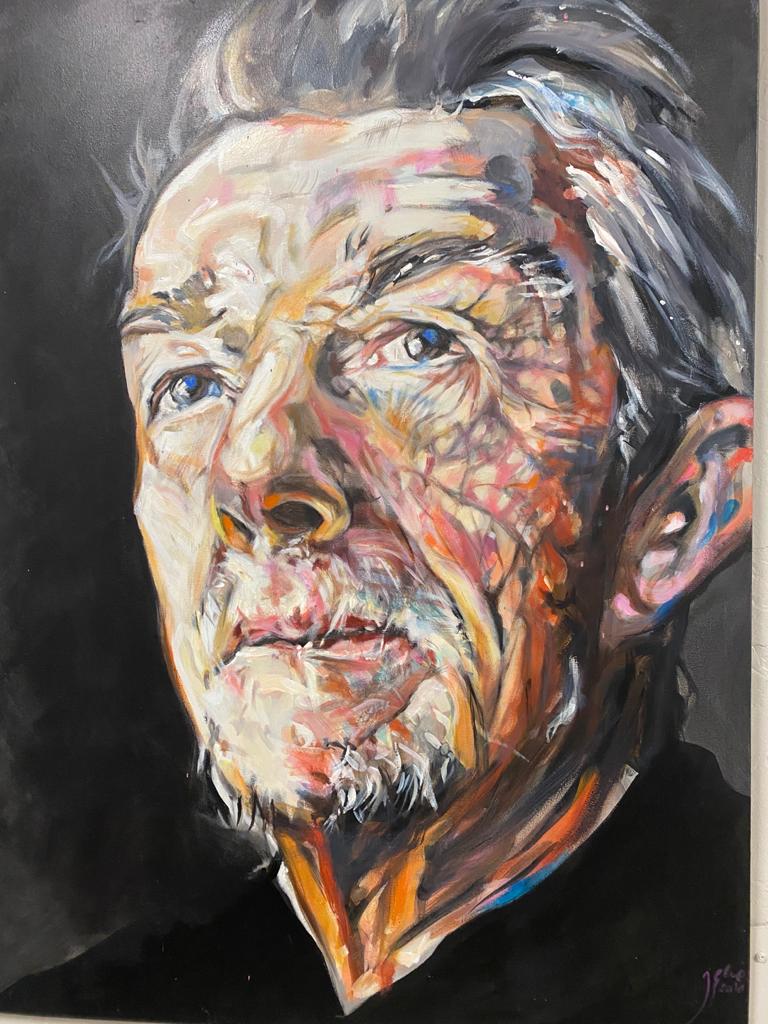
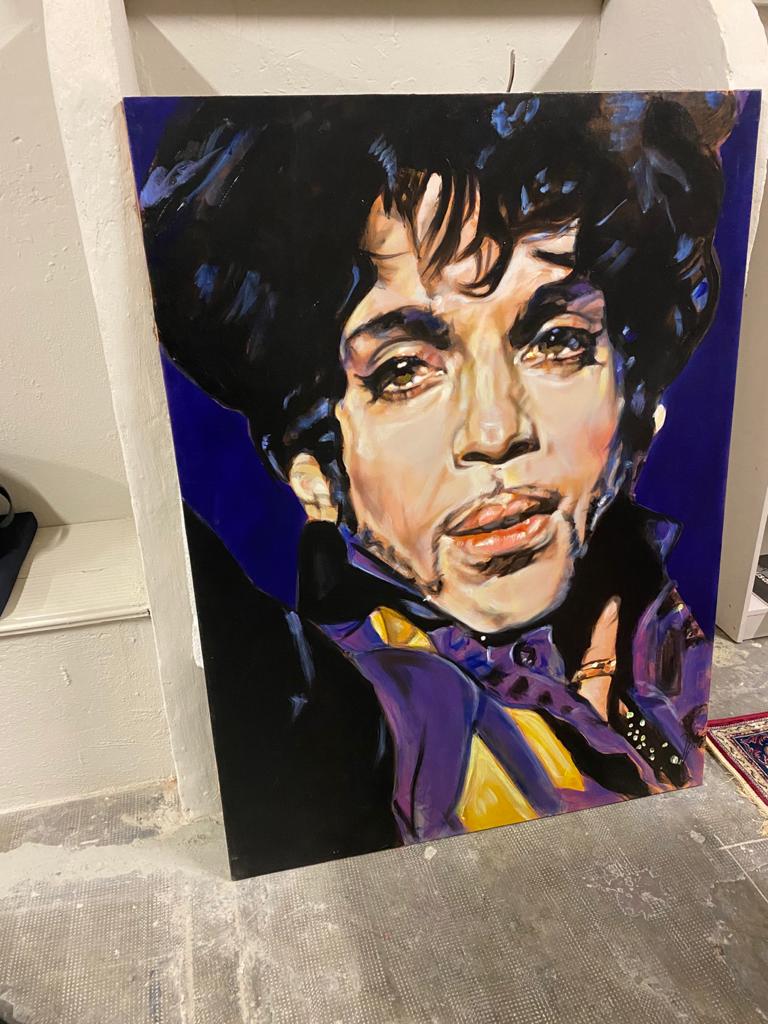
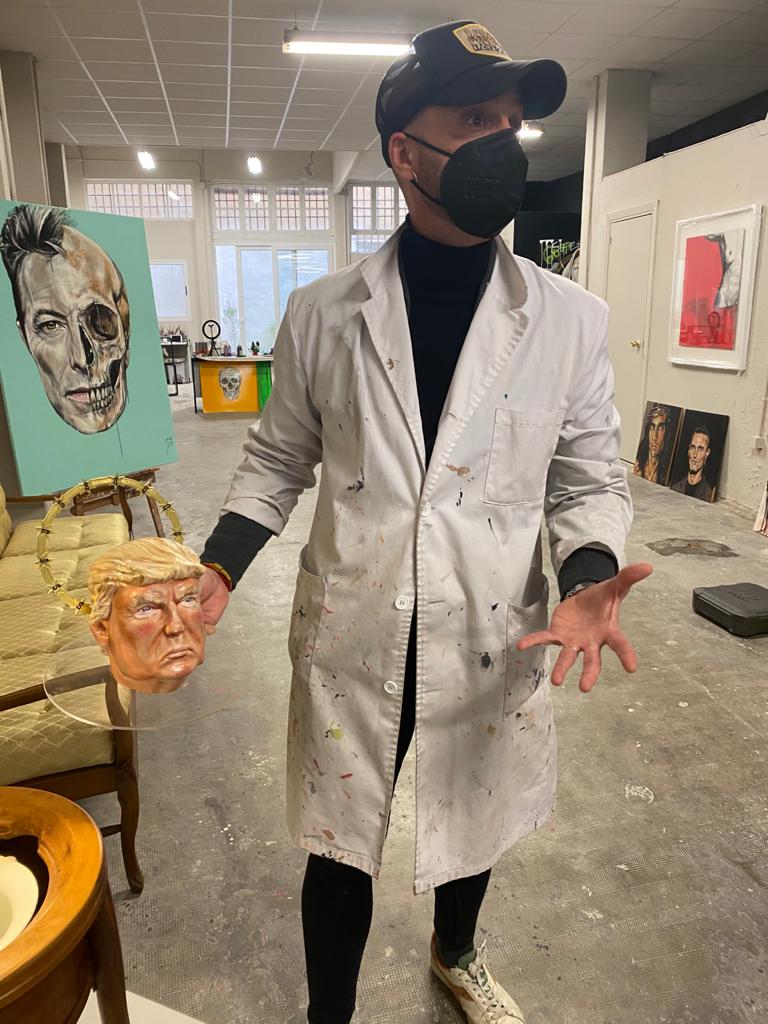
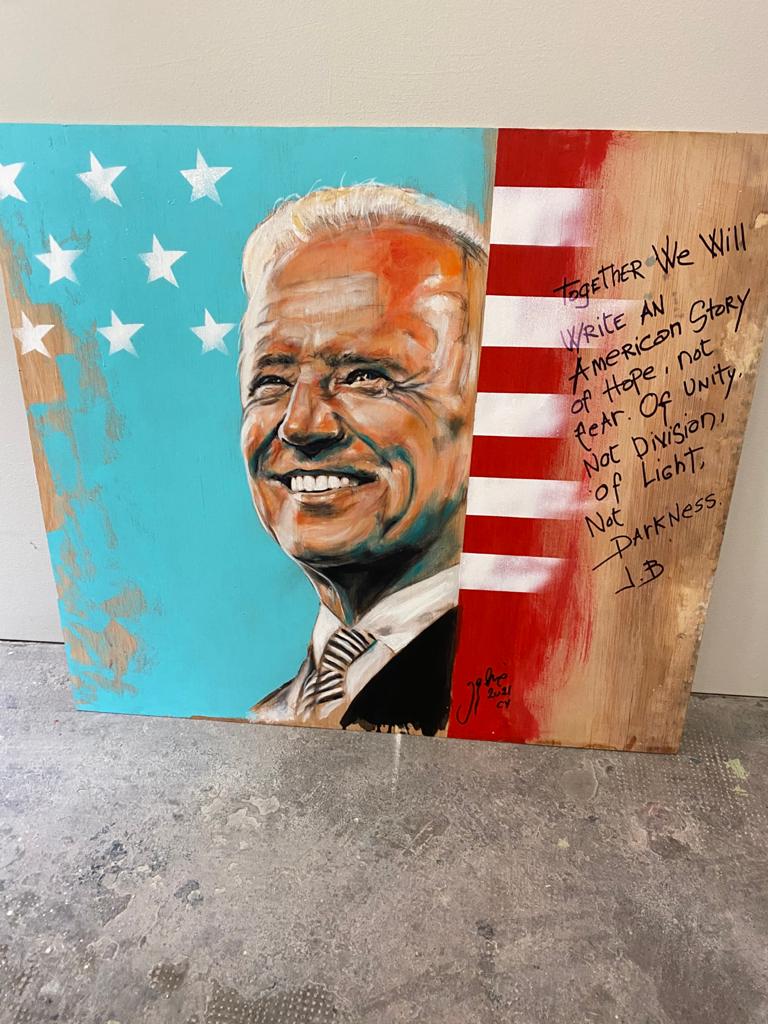
Jesus Arrue – The Family Man
He has six siblings, he tells me, two of whom became police officers, the oldest and the youngest. He remembers the barrio with great affection, which he says this with a wistful smile.
They were poor, but happy, he discloses. “Dad was a construction worker and later a carpenter, while my mother was a cleaner,” he confides. It was a hard, tough life for her, raising six kids on minimum wage, he admits, and usually by herself because his dad was usually working.
“All of us siblings had an artistic outlook,” he tells me. “We all used to paint all over the pavements and walls of the neighbourhood with paints and crayons. There was a prostitute who was always on the same corner, an older lady.”
He found it strange, he says, because she had her family elsewhere, and would take a bus to the barrio to take up a position on her corner. She would arrive in civilian clothes, says Arrue, then change into a short skirt and a blouse showing off her “ample bosom”. They would see her when they got back from school or were on their way to the market, he explains: “We would always say hi, and she would always say hi back.”
And as she always saw them painting, explains Arrue; one day when he was still a young child, she called him over and gave him a box of sketching pencils and a sketchpad. He drew a picture of her, and gave it to her. As Arrue grew up, he became a graffiti artist, he says, and worked all over El Carmen: “I had a huge depiction of Bowie on Calle Benificencia,” he says.
We made our own fun
Growing up in those difficult circumstances, he says, encouraged their artistic vein: “We didn’t have toys, our parents couldn’t afford them. So we made our own fun. To the point that when Fallas was on, we would make fallas ninots (puppets), mini-ones, of course, out of plasticine, and we would display them on the street to either sell or so that they would leave us a few coins.”
In fact, they had their own competition among themselves to see whose was best, he says.
Arrue explains: “Out of the six siblings, two of us have become professional artists, although all of us are artistic, and that comes from my dad’s dad, and my dad himself. We are a very close family, almost like a gypsy family, where we all support each other. It has been tough not seeing them throughout the pandemic.”
He tells me, he has worked at everything, even cleaning staircases and stairwells with his mum, while studying psychology. He is from a very humble background, and proud of it. There is an art school here that specialises in arts and crafts that he also attended, he tells me, but he didn’t finish either because he got sucked into Valencia’s nightlife scene.
“I needed to make money to pay my bills,” he explains, “so between the nightlife jobs and as a shop assistant in a clothing store, I had no time to study.”
Jesus Arrue – ‘I had no life’
“But my art was never left behind, it was always parallel to whatever else I was doing. I only need four hours’ sleep each night and I always had some kind of little studio for doing my art after working each night.”
He used to paint to order for commissions to make sure money kept coming in, he says, adding that he had no life and that he worked all day during the week and came home back to paint. At weekends, he worked all weekend in bars and clubs – and still found time for his art.
“My success came slowly,” he says modestly, “but it was all word of mouth until I hit the big time. I am now 47 and at the age of 40 I took the crazy decision to give up all my paid work and take the gamble of opening a studio to dedicate myself to my art full-time.”
He got really lucky, insofar as he points out, “as I am surrounded by amazing people from my family and my network who are my support team.”
One day when Arrue was still a young child, a street prostitute on the corner opposite his building called him over and gave him a box of sketching pencils and a sketchpad. He drew a picture of her, and gave it to her…
A miracle
He used to just about survive by painting and then a miracle happened, in his words – he sold a piece to Alejandro Sanz [the famous Spanish singer] and everything flowed from there. And his Instagram account helped him to push the whole thing forward even further until he sold one to Madonna [in August 2020]: “Madonna and Bowie are always present in my work,” he says with pride.
I ask him about the Madonna story. “It was weird because I received a private message via Instagram from one of Madonna’s dancers,” he discloses, “and a personal trainer was telling me that Madonna was right next to her, and she loved the portrait of Madonna on my Instagram.
“I didn’t believe it so I ignored it at first. Then a couple of days later, in the middle of the night our time, she messaged again, and said, ‘Right, I’m here with Madonna, she wants to buy the painting.’
Enter Madonna
“I said, “Excuse me?”, which I got via Google Translate, and then Madonna spoke to confirm she wanted it. And then – this was August 2020 – they came back to confirm they wanted to buy it. Madonna! Imagine!”
To Arrue, reproducing a picture or a photo strictly as it is – “hiperrealismo” – does not work; as he says, “in the end, it would be just a copy”.
He explains: “I use images to build upon them, but I don’t copy them”. The same happens with his visions. He interprets them in “his own way”. He said as he showed us one of his favourites pieces, a prostitute tormented about the guilt of the vices after a night full of excess. “This is a portrait of the mental shower you take the next day,” he says, sadly. It’s not a real person, he explains, but an amalgamation.
He explains: “Sometimes, I work from my imagination. One of my favourite pieces over there is one that came out of my head, the woman in torment.”
We look for a seat to relax
“It is the aftermath of the excess and torment of drugs, vice and sex, it is a study in guilt based on personal experience. I worked in clubs as a go-go dancer and this was inspired by some of my colleagues. Women who were beautiful on the outside but in torment within.”
This piece in particular reminds him of the prostitute who first helped him. And of night shifts in bars, as a dancer, bar-tendering, and cleaning tables. While we admire his artwork, we look for a seat to relax and chat further.
The room is filled with incredible pieces, and he tells us that his full collection is currently dispersed around the world, with shows in London, Madrid, Pamplona, Santander and that he has also exhibited in such far-flung sites as Vancouver, Hong Kong, Shanghai, not just Valencia.
Award winning
I ask him, what is his view on the painting local scene in Valencia today.
“The city of Valencia was – and is today – the cradle of many amazing artists. So I feel that the Ayuntamiento, associations and so on should promote or invest much more on the artisans of this craft,” he says with passion.
He recalls that he painted a menina in Madrid and won an award for his work. “To this day, no governmental Valencian offices have purchased one,” he says, sadly. “All of my success has been due to hard work, but with no local recognition.”
His husband works as the administrative officer of his business, and after his success with Madonna, I ask if he decided to increase the prices of his work, as many artists would. He tells me no.
I ask whether I could afford one of his pieces. He laughs, and says: “It depends on the size of the piece, obviously!”
He points out that, in his line of work, you can sell five paintings one day, and none for months.
We conclude with Arrue telling me: “This is a family business. My husband runs it, my brother-in-law looks after it and I only care about spending time with my family. I am Valencian and proud of it.”
I finish by asking him: “Pensat i fet?”
He laughs uproariously, and places his hands on my shoulders: “Sí, es así! Pensat i fet, Eugenio!”
Keep up to date with what’s happening in Valencia’s art scene here.
• Visit https://jesusarrue.art to see more or follow Jesus Arrue on Instagram @jesusarrueart
EUGENE COSTELLO
Story by freelance journalist and writer, Eugene Costello, formerly based in east London and now living in Valencia, Spain. Founder of Valencia Life https://eugenecostello.co.uk/
What a great story, I feel like I know him.
Hi Bernie! Thanks so much – a very generous comment!
Best,
Eugene
Your writing has a perfect balance of information and engagement. I was hooked from the start.
This article is a perfect blend of research, insight, and clarity. A fantastic read.
Your article is exceptionally well-crafted! The flow, depth, and clarity make it a joy to read.
Your research and attention to detail really shine through in this article. Amazing job.
This is an outstanding piece of writing! Your ability to engage readers is remarkable.
Your article is a breath of fresh air! I truly appreciate the clarity and depth of your insights.
Your ability to simplify complicated topics is truly commendable. Keep up the great work. slot zeusbola
Your perspective on this subject is so refreshing and well-articulated. I thoroughly enjoyed reading it! zeusbola
This is a fantastic read! Your passion and expertise shine through every word.
Your writing has a unique way of capturing attention and making complex ideas easy to grasp. Great job! zeusbola
This is hands down one of the best articles I’ve read on this topic. You explain things so clearly.
Absolutely brilliant! Your article is well-researched, insightful, and a pleasure to read.
I admire your ability to break down complex topics into simple, digestible content. Well done. zeusbola
Your article made me see this topic in a whole new light. Thank you for such an insightful piece.
Cycling Equipoise and Sustanon 250 is a great way to attain steady positive aspects whereas keeping your body healthy.
Nevertheless, even the most dedicated athletes can experience setbacks as
a end result of injury or sickness. Secondly, Trenbolone
isn’t a steroid you could or ought to just come off and do a
quick PCT and think you’re done. Until you’re ready to cruise on Testosterone or do longer-term TRT, rethink utilizing Trenbolone.
When the blood vessels of the muscular wall
of the airways are constricted, Tren cough is triggered.
We still don’t know precisely why this happens, but experts know it is related to a respiratory distress response.
One of the first reasons for Deca-Durabolin’s reputation amongst bodybuilders and athletes
is its significant impact on muscle development and recovery.
The deca steroid benefits embrace elevated protein synthesis, which outcomes
in sooner muscle development and enhanced recovery from intense coaching periods.
The chemical construction of Deca-Durabolin gives it distinctive properties that set it other than other
anabolic steroids. (https://git.rikkei.edu.vn/danepedigo557/dane1996/-/issues/1).
It has a robust anabolic impact in comparability with nandrolone and other esters, making
it extremely effective for building lean body mass.
Moreover, Deca-Durabolin has the power to increase bone mass and stimulate the
formation of purple blood cells within the
bone marrow. Sustanon 250 is a robust anabolic steroid that helps to promote muscle development and restoration. A typical Sustanon 250 cycle lasts eight weeks, and users report
experiencing lowered recovery time between exercises.
The Female Bulking Stack reduces your post-workout recovery time significantly.
DOMS (muscle soreness) is lowered to very low levels or
non-existent, making you are feeling able to go for another exercise in no time.
Relying on how the steroids are used, this could vary from relatively small changes
to the development of extreme masculine traits. So, though it’s not
common, some feminine athletes and bodybuilders do select to
use steroids for performance-enhancing advantages. When undertaken carefully, these girls can achieve important benefits while
carefully controlling the side effects. That takes
us to Equipoise – this testosterone-derived steroid is a modified form of Dianabol.
EQ has much less estrogenic activity than Dianabol, however all testosterone-derived steroids can lead to the event
of water retention.
However, it is illegal to own, purchase, or sell testosterone for cosmetic use.
Decreasing the needle gauge to 30 or 25 may also create
a extra nice and less painful injection expertise. TUDCA is the best supplement, in our expertise, for reducing hepatotoxicity.
Androgenic unwanted effects are potential on Anavar; nevertheless, they’ll already exist as a end
result of presence of testosterone. This fat-burning effect is due to androgen receptors
growing the expression of carnitine palmitoyltransferase I (CPTI), consequently lowering
fats mass (2). There is an additional threat of gynecomastia when taking Deca Durabolin due to its
reasonable progesterone activity. Some of our sufferers have discovered testosterone suspension injections to be painful.
Some have suggested that a 10mg per day dosing of
Nolvadex along together with your Arimidex use may very well aid in cholesterol management.
Testosterone could be administered parenterally,
nevertheless it has more irregular prolonged absorption time and larger
activity in muscle in enanthate, undecanoate, or cypionate
ester form. In addition, as a outcome of estered testosterone is dissolved in oil, intravenous
injection has the potential to trigger a harmful embolism (clot) within the bloodstream.
A normal error is to assume that the half-life of a steroid is a
agency and unchangeable number. In some circumstances, you will
see a range of hours or even days estimating a half-life because individual factors like metabolism will always trigger variations.
The half-life of a steroid gives you a technique of figuring out how long that steroid will
remain lively in your system at a stage the place performance and physical
benefits might be noticeable and achievable. Collagen additionally acts
as an antioxidant and helps the skin and connective tissues.
In other words, enhanced collagen synthesis has wide-ranging well
being benefits.
If you expertise any of these unwanted facet effects, it’s essential to stop taking Deca
Durabolin and seek the advice of with a health care
provider. If you might be, you’ll eventually begin to see the superb results that Deca Durabolin can supply.
There are a big selection of completely different Deca
Durabolin cycles that can be used to realize completely different targets.
It Is important to do your research and select the cycle that is best for you.
Pumps will be excessive during workouts, however this may even be a standard theme outdoors
of the gym because of elevated glycogen storage. Tren users will ooze confidence due
to incredible surges in exogenous testosterone. How much muscle a user will acquire on tren will depend on their degree of past steroid use.
We have come to understand that every aggressive powerlifter
might be operating trenbolone of their stack
before a meet. Firstly, it is important to perceive that
each person will reply in another way to trenbolone
primarily based on their genetic code, making them kind of vulnerable to
certain unwanted effects. If you might be contemplating using Deca,
it is necessary to analysis the laws in your country and to seek the advice of with
a healthcare supplier before beginning use.
For instance, a steroid like Trenbolone, which
is used to fatten livestock and is not permitted by doctors for human use,
has a a lot more powerful muscle-building effect than testosterone in people.
Although the NCAA randomly drug-tests pupil athletes from Division I to Division III, the abuse of performance-enhancing drugs just isn’t unusual
in the college degree. It is up to the schools and universities
whether or not they want to implement their very own drug testing policy,
which most do. The shortcut to the MLB is discovered in the junior school degree or the Nationwide Junior School Athletic Association (NJCAA).
The NJCAA doesn’t drug-test their scholar athletes so it’s as
much as that school whether or not the players are drug examined in any respect.
The faster and extra dramatic the transformation, the less likely it’s just food plan and exercise.
In the US, it’s not authorized to make use of steroids and PEDs with no
prescription for personal and aesthetic positive aspects, however it also isn’t thought of “cheating”
per se. And these drugs work very properly — they wouldn’t be banned from the Olympics in the event that they have been duds.
After he took a three-month cycle of steroids, his muscles swelled and he obtained
exponentially stronger.
The diagnostic value of free cortisol levels, nonetheless, isn’t definitively proven, and the take a look at itself is
also not yet widely available. The masculising results of
steroids on the voice, hair progress, facial features, musculature, and other elements make it both extra consequential in every day life and easier to tell the distinction between pure bodybuilders
and steroid users. Whereas pure bodybuilders
shouldn’t take steroids, some ‘natural bodybuilders
nonetheless use anabolic steroids. Testing is limited, and there’ll all the time be someone prepared to cheat to win – even in a federation or category
dedicated to steroid-free bodybuilding. Wood, the USC researcher, said that
consistent users may not utterly wean themselves off the drugs they’re using, and instead swap to a lower dosage.
When studying athletes who used PEDs, customers wanted to continue their regimen to keep
up their physical prowess whereas on the identical time making up for their our bodies shutting down their natural manufacturing of testosterone.
You will be insulted and stored out of the Baseball Corridor
of Fame because the Baseball Writers Affiliation of America voters who determine
who gets enshrined in Cooperstown have chosen to come back down hard on juicers.
Nevertheless, if you’re a former heroin addict (as is Kennedy), 70, and also you bulk up on “testosterone substitute,” packing on garish
knots of muscle that no senior citizen could naturally attain, then you’re
just following your doctor’s orders. Possibly if Kennedy gets on extra
ballots, it will turn out to be an issue, but for now, it’s not.
One Other wrinkle with steroids is that desired outcomes are tied to long-term use.
Steroid customers could give up cold turkey, but quitting abruptly throws testosterone levels into chaos and causes the consumer to lose any bodily positive aspects they’d made.
Rabin mentioned that WADA has seen a lower in optimistic PED tests among athletes
due to how incessantly testing occurs. WADA has, with each year, increased the variety of tests
on athletes and improved the know-how wanted to detect them.
Trenbolone is a highly effective anabolic steroid utilized by athletes and bodybuilders everywhere in the world.
This steroid is a good bulker and hardener, with muscle fiber accounting for virtually all of features and little to no water retention. Trenbolone is a 19-nor testosterone spinoff that, like nandrolone,
has progestin-like effects. The two most typical esters are Trenbolone Acetate
and Enanthate, with Hexahydrobenzylcarbonate as a third choice.
Trenbolone is also available as Tri Trenbolone, a blend of three risks of using anabolic Steroids And other performance-enhancing drugs Trenbolone esters.
We’ll shortly go over each kind, as nicely as some
other steroid facts that everybody should be conscious of.
This is attributed to the high focus of androgen receptors in these areas, which outcomes in pronounced progress when influenced by anabolic-androgenic steroids.
At fitness conventions, I usually observe males with shoulders that seem virtually unnaturally squared.
This is in stark contrast to the physiques of most natural bodybuilders I’ve encountered, including some of my most accomplished clients.
If you have your eyes on steroids – I’d extremely advise you
to consider the authorized, safer, and more healthy options we listed
above. Natural bodybuilding vs steroids is a alternative for every particular
person, however the general themes are important. Steroids may cause
numerous unwanted facet effects, starting from mild (acne, headaches)
to severe (heart assaults, liver damage). You additionally
can’t be big and shredded without steroids – there’s an old saying that you must decide two from huge, lean, and natural.
According to our exams, Ostarine can cause 30–60% decreases in testosterone, requiring Nolvadex or Clomid to speed up
endogenous testosterone restoration. This condition is a results of excessive estrogen levels, which are generally present in abundance
in females. As a outcome, if the person sweats often or turns right into a
tomato on the first indicators of aggravation, they are
doubtless on steroids. Testosterone is partly liable for the size of our physique,
which steroids have a tendency to extend. Before a competition, most weightlifters deprive themselves
of water to tighten their pores and skin and make their muscle tissue stand
out. This apply is called dry muscle and sometimes lasts
for 3 days.
Initially, their muscle features mirrored mine, however they constantly added mass, accumulating a formidable 30–50 lbs to their physique in a comparatively temporary span. I recall my
early days of understanding, when it took me a quantity of months to witness discernible progress.
My peak achievement was gaining 20 kilos of muscle over an extended
interval, followed by solely incremental muscle
additions.
70918248
References:
dangers of using steroids; petstepin.com,
70918248
References:
none